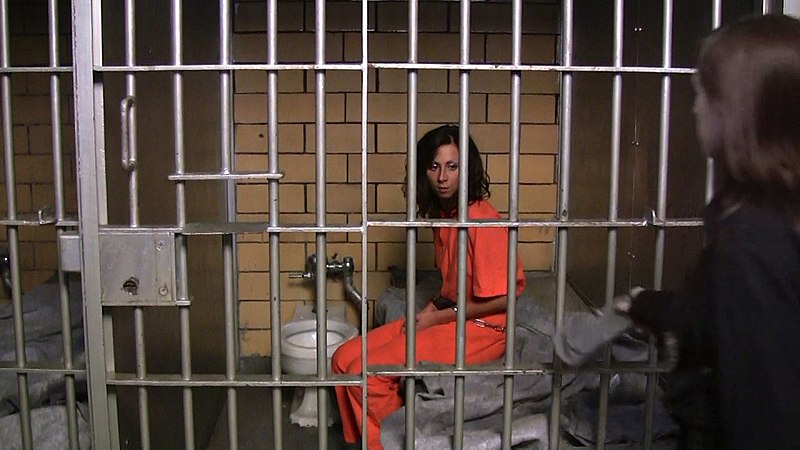Faced with the inherent harms of drug prohibition, people who use opioids find ways to take care of themselves and one another. And that is no different for incarcerated women.
Some, for example, find ways to access critical harm reduction tools that are considered “contraband.” In particular, methadone and buprenorphine—the partial opioid agonist that is garnering increased acceptance as an essential type of medication-assisted treatment (MAT) for opioid use disorder—are prohibited in most prisons and jails.
“The attitude toward medications used for addiction treatments, like buprenorphine and methadone, equates them to shanks. I find that not necessarily surprising, but very dangerous,” Dr. Kimberly Sue, medical director of the Harm Reduction Coalition, tells Filter.
Refusing to provide this “lifesaving medication increases [inmates’] risk of death,” says Sue. She uses the example of high cholesterol medication to put the irrationality of this prison policy into perspective. “You might be in your 30s, and you might have a heart attack in your 60s, but I know treating your high cholesterol will help you down the line … if you don’t get your high cholesterol medication in jail, it’s probably okay. But if you don’t get your buprenorphine in jail, and you get forcibly detoxed, it’s probably not okay.”

Dr. Kim Sue. Photo via Twitter.
In Sue’s forthcoming book, Getting Wrecked: Women and Incarceration in the American Opioid Crisis, the medical anthropologist and practicing physician investigates how prisons and jails “encroach on treatment,” simultaneously adopting some forms of supportive services—like “professional development” training, “stuff like ‘Dress for Success’”—while eschewing others, like buprenorphine.
While conducting ethnographic research in a women’s prison, Sue saw social practices that defy common negative stereotypes of people who are incarcerated and people who use drugs.
Prisons provide career-oriented services in an attempt “to empower and get women back on their feet,” says Sue. But she points out that such services operate within a system that dooms them to fail. “The fact of incarceration itself and the CORI—what we call Criminal Offender Record [Information] in Massachusetts—is so damaging for people’s life prospects. It doesn’t matter how much you prep someone’s resume. It’s the fact of incarceration that is so damaging.”
But incarcerated women, despite the suspension of their freedom and the institutional denial of their well-being, find ways to survive, both individually and collectively. While conducting ethnographic research in a women’s prison in Massachusetts, Sue saw social practices that defy common negative stereotypes of people who are incarcerated and people who use drugs.
“A lot of people would gift buprenorphine,” recounts Sue. “If people knew they were in lock-up, and they were going to be released, they would leave it for other people who were going to be sick.” Contradicting the idea that people who use drugs are not able to manage their use or “have no control,” she says, these incarcerated women knew that “they are going to be able to go out and score and use,” and thus chose to pass along the medicine.
Simply, “there is a lot of kindness.”
Additionally, Sue explains how the self-reliant networks created by incarcerated women demonstrate a successful alternative to the kind of abstinence prescribed by Narcotics Anonymous (NA). NA encourages participants to distance themselves from people, places and things associated with their use. Participants, Sue says, are often told “to move away” from the “people [who] have done things for you as part of a community of people taking care of each other and just surviving on the street.”
Disagreeing with those who say, “It’s very lonely to be in recovery,” Sue instead believes, “We make them lonely.”
Networks of self-care among incarcerated women are not just about accessing a potentially live-saving medication. To portray them as such would miss an entire reason for drug use that is sometimes avoided by even progressive drug policy makers and is surely, by design, outlawed by prisons: to access, as Sue describes it, “a moment of peace or calm or intoxication or pleasure—whatever they are seeking.”
“You’re in solitary. You are in the worst place of your life,” Sue says. So “of course people are going to want to use it to get high.” Prisons are violent places, and incarceration is both physically and mentally devastating. “The conditions imposed by prisons are meant to be uncomfortable. The punishment is that.”
In her capacity as medical director at the Harm Reduction Coalition, Sue is working to make life-saving harm reduction interventions more available. She and fellow staff are working with Linda Rosenthal, a New York State Assembly member, on a bill for access to medication-assisted treatment in New York prisons and jails.
Sue is additionally developing resources to help doctors and medical providers navigate “the weird regulatory system we have around [prescribing buprenorphine]” and to feel confident prescribing the medicine once they have completed the waiver process.
“I am constantly apologizing for how [the profession of] medicine harms people who use drugs,” says Sue. “I am trying to make medicine a safer, kinder and more compassionate place for drugs.”
Top photo via Wikimedia Commons





Show Comments